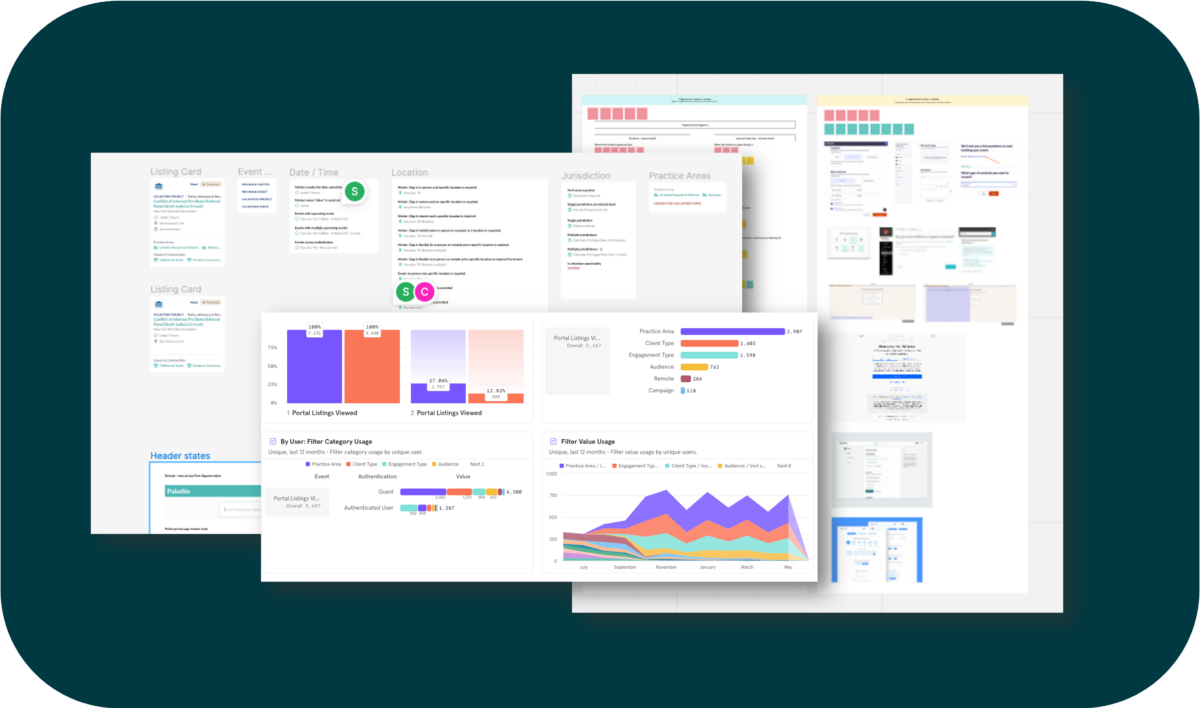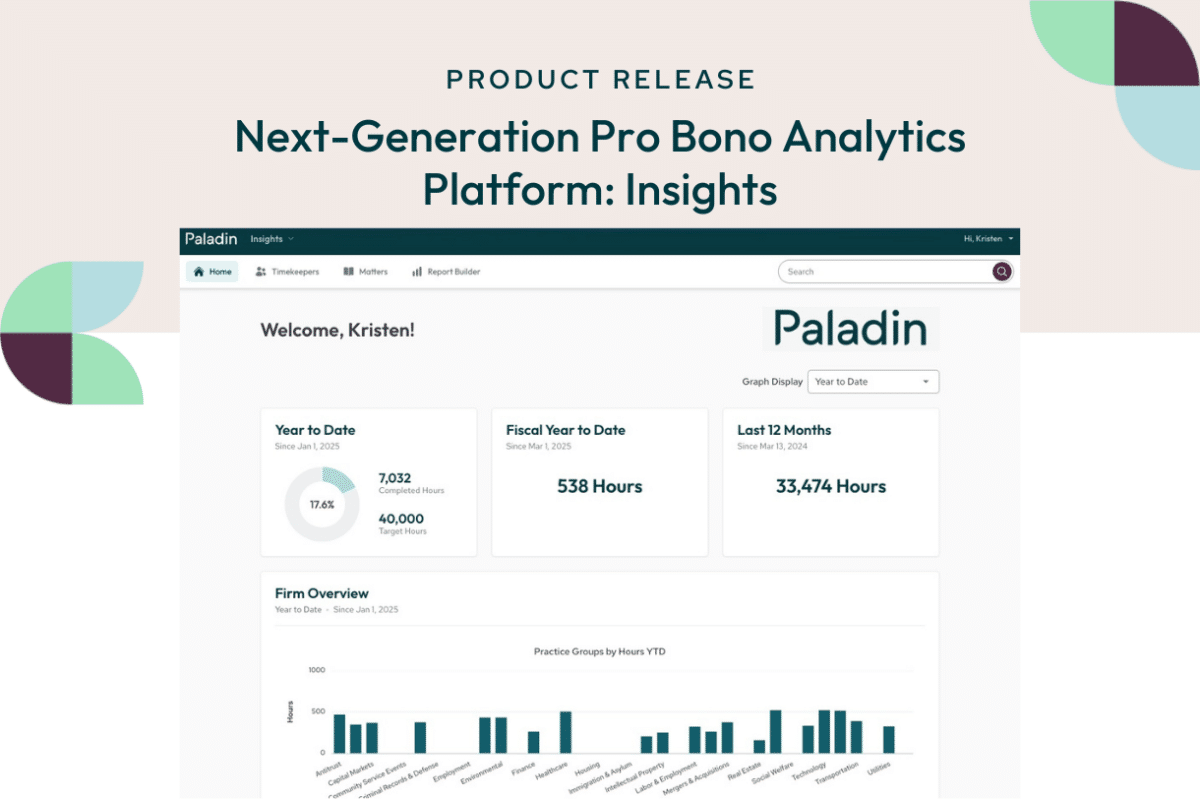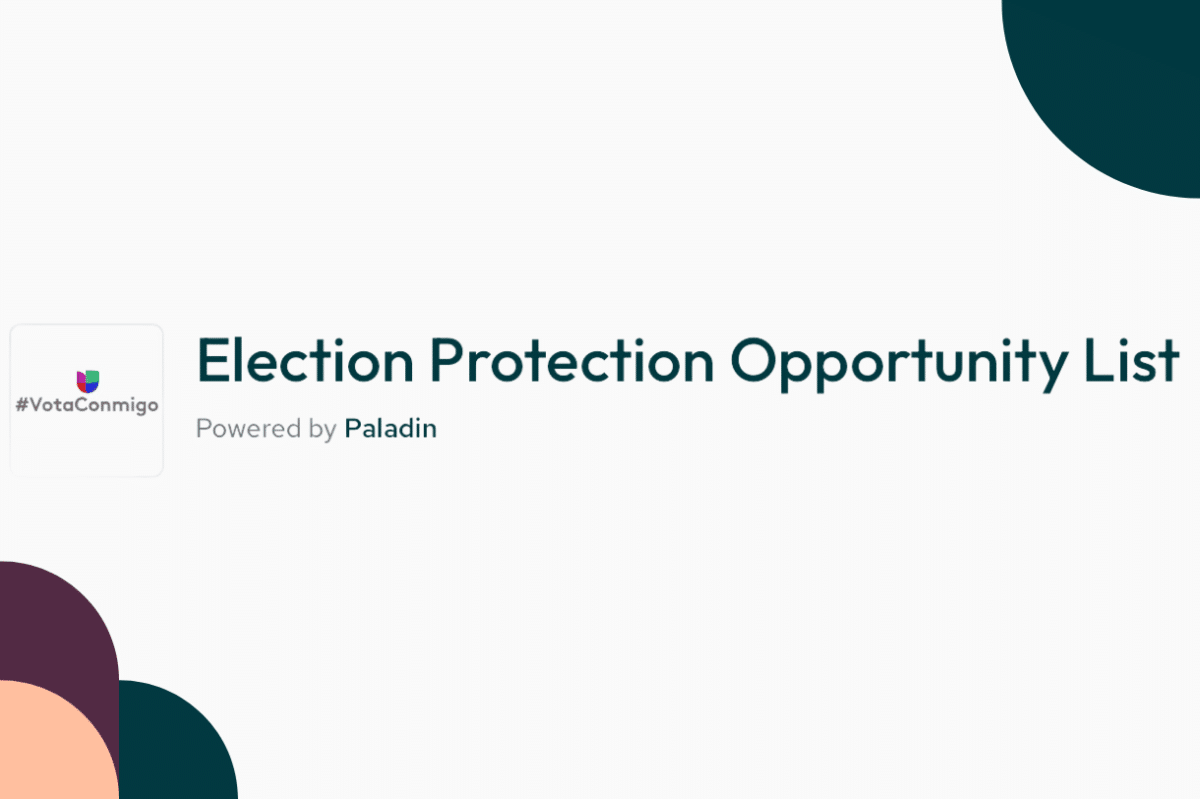Introduction
As a common practice in many of today’s software companies, product teams continuously work to validate that a feature or function has value for its users and its business. Ideally this is determined prior to spending a lot of time and money on building solutions that may or may not hit the mark. In the last year, Paladin has made a significant set of improvements and innovations to its recruiting platform for pro bono work, and this post defines some of the tools we used to ensure that what we were building would be valuable.
The Problem
At the beginning of 2022, there was a significant interest in improving the experience for volunteers. But as with all problems, exactly what to do to fix it was an unknown at the time. What we were hearing was that lawyers were not always “seeing relevant opportunities on our platform.” There were multiple hypotheses we built to understand why this perception existed:
- There weren’t enough opportunities on our platform
- The opportunities on our platform weren’t broad or diverse
- The search and filter functions on our opportunity listings page were hard to find and use
- Our platform wasn’t successfully optimizing the list of opportunities to offer to them based on their personal preferences and interests
We knew from our data that we had a wide variety of opportunities on our platform from more than 250 legal aid organizations, so it was not likely that working on the first two hypotheses were going to provide significant impact. For the remaining hypotheses, we conducted a series of studies that included current customers, as well as external legal professionals across the country:
- Usability sessions to validate whether lawyers could find relevant opportunities on our platform using our current search and filter functionality;
- Generative sessions to learn what information is most important for them to know about a pro bono opportunity to determine that it is a good fit; and
- Evaluative sessions to validate that lawyers would find it useful to enter preferences and see a list of relevant opportunities
With this information, we honed our solutions approach. We needed to:
- Make it easy for lawyers to set their preferences and then use that information to match them with pro bono opportunities;
- Display prominently the information that was most important to them for deciding if they can help; and
- Make it easy to search and filter by key categories to find the best opportunities for them.
We hypothesized that the more consistently this information was provided to volunteers, the more quickly and decisively volunteers who could help would sign up. That meant we needed to be sure our listings had this information and we had to make it easy for volunteers to find it. We believed that changing the format, content, and process for completing the form will result in better information to present to volunteers, which should improve the number of opportunities that receive interest from them.
Search / Filter
Because we have an extensive network of Legal Service Organizations who use our platform to market their volunteer needs, we knew that it would take some effort to retrain our users on any changes or improvements we made to the entry form that they used. So while some of the team worked on UX validations on the new form organization, we set about improving our search and filtering capability. Our primary goal here was to improve the visibility and intuitiveness of our search and filter capabilities so that volunteers visiting the Paladin platform could more quickly and easily find opportunities that matched their skillset and location.
Our engineers conducted technical evaluations on a number of market offerings, and recommended that we leverage Algolia. Its specific site indexing feature and extensive metadata faceting let’s us leverage user preferences to tailor recommendations to each user. We also re-organized the information on our lists to ensure that time commitment, location and qualification data was easy to see and understand.
Since we’ve implemented this functionality in August 2022, we’ve seen some great engagement improvements year over year:
- an average 30% improvement in total volunteer sign ups
- a 15% improvement in the conversion rate from search to sign up

Relevance Scoring
One of the other benefits to leveraging Algolia was its support for custom ranking in its search capabilities. With this feature, we were able to weight our attribute categories in order of relevance to our users – as defined by each of them through their selected preferences. A user who defined their preferences to, for example, work on brief service engagements in support of immigration rights would now see pro bono opportunities with those attributes higher in their search results.

Opportunity Form
The next step in this process of optimization was to re-build our opportunity entry form to ensure that we were capturing the details we knew volunteers were looking for to make decisions. This required us to spend a bit of time with our Legal Service Organization administrators and CX team working through the sections of the form using Miro and Figma to support collaboration.

These exercises were important steps in defining not only the elements that we’d include, but the order of those elements and the tolerance for required fields – obviously we could make every field in the form required, but we didn’t want to overburden admins or frustrate them with onerous entry criteria. We knew that having certain information was crucial to developing the solution with confidence, so we provided explainer text to help them understand why that data was important. We wanted to make sure that our changes would not have any negative impacts on Legal Service Organizations ability to enter opportunities on our platform or on how long it took to enter them.
Since we launched the new opportunity form, we are seeing it take less time for our users to complete their work to enter Opportunities. This isn’t only because of our technology decisions, but also the great training provided by our client success team. What we’re happy about is that despite the additional questions on the form today (especially the number required) and the increased number of Opportunities being added overall, it isn’t taking longer for most users to get their work done – in fact, 80% of users complete the form within 10 minutes.

Conclusion
At Paladin, the product team is tasked with coming up with a solution that works for both the customer and for the business – that is, we solve problems by working with our clients, partners and prospects to build solutions that provide real value. This isn’t necessarily a new idea for tech companies, but it is a bit novel for the legal industry. For us, it’s not enough to just deliver features. We want to know that our technology is useful and intuitive, stable and scaleable, and most importantly valuable to the people who leverage it in service to their clients. Through discovery processes like those articulated here, Paladin can make “smart bets” about how our software will deliver value, and can learn quickly from our data about where to continuously improve.




